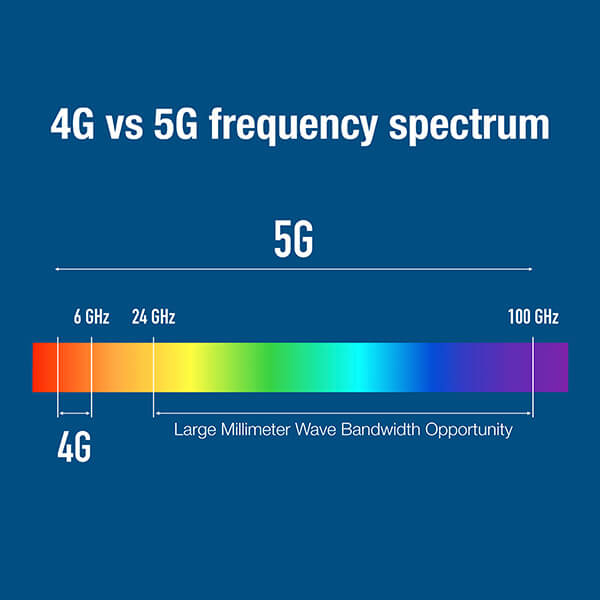Why 4G GPS Tracking Is Better Than 5G GPS Tracking
The mobile technology landscape has undergone a massive transformation in recent years, with the arrival of 5G networks offering faster speeds and lower latency. While 5G offers many advantages for a variety of applications, when it comes to GPS tracking, 4G technology still holds several key benefits that make it the better choice for most users. Whether it’s network stability, latency, cost, battery life, or infrastructure challenges, 4G still proves to be the more practical and reliable option for GPS tracking applications. This article delves into the reasons why 4G GPS tracking outperforms 5G in several key aspects.
1. Network Stability and Coverage
Network stability and coverage are critical factors when choosing a GPS tracking system. For GPS devices to provide real-time location data, they must have a consistent, reliable connection to the network. While 5G is undeniably faster, its coverage is still in the early stages of deployment, leaving large gaps in connectivity, especially in rural areas.
The Extensive Reach of 4G Networks
4G networks have been around for over a decade, and they offer wide geographic coverage. In fact, 4G LTE networks cover nearly 99% of the U.S. population, according to the Federal Communications Commission (FCC). This means that, no matter where you are—whether you’re tracking a vehicle on a cross-country road trip or monitoring a fleet of trucks in rural areas—4G GPS trackers can provide consistent, reliable data, even in less populated or remote regions.
On the other hand, 5G technology is still in the process of being rolled out globally, and its availability is limited to major urban centers, commercial zones, and some suburban areas. In 2023, the GSMA reported that while 5G networks are expanding, they still cover only a small portion of rural areas. This limited availability creates a major issue for GPS tracking devices that depend on a stable, uninterrupted connection. In areas without 5G infrastructure, these devices would be forced to rely on slower, more intermittent networks.
For instance, a GPS tracker on a vehicle in a rural area with limited 5G coverage would struggle to send accurate real-time data or might lose connection entirely. In contrast, 4G GPS trackers would continue to provide accurate location updates in these regions, as 4G networks are far more mature and widespread.
Real-World Example of 4G Coverage
In a study conducted by the Global System for Mobile Communications Association (GSMA), it was noted that 4G networks offer superior coverage, with 98% of urban areas and over 80% of rural regions in the U.S. being covered by LTE signals. This network reliability ensures that GPS tracking devices based on 4G technology can reliably function in virtually all environments, without the uncertainty of limited or unavailable 5G coverage.

2. Lower Latency with 4G
Latency refers to the delay before data starts transferring after a request is made. In GPS tracking, low latency is essential to provide real-time location updates. While 5G networks promise to deliver ultra-low latency, 4G is already sufficiently fast for most GPS tracking applications.
Comparing Latency in 4G and 5G GPS Tracking
5G technology is designed to significantly reduce latency, with claims of speeds as low as 1 millisecond (ms). This ultra-low latency is indeed impressive, especially for applications requiring real-time communication, such as remote surgery, autonomous vehicles, and industrial automation. However, when it comes to GPS tracking, a latency of 30-50 milliseconds—which is typical of 4G networks—is often more than enough.
For example, a GPS tracking device reporting every 10 seconds on a 4G network can still provide highly accurate and near-instantaneous data updates to fleet managers or asset owners. While 5G’s potential for 1 ms latency would be beneficial for applications that require immediate, high-speed data processing, the real-time tracking needs of most GPS applications, such as vehicle fleet management, personal tracking, or asset monitoring, are easily met by 4G.
Impact of 4G Latency on GPS Tracking
The latency of 4G ensures that location data is transmitted quickly enough to provide real-time visibility without noticeable delays. Fleet managers and businesses often depend on the quick transmission of location data to monitor deliveries, ensure safety, and track performance. The latency offered by 4G provides sufficient speed for these functions, whereas 5G latency, while faster, offers little practical advantage for typical GPS tracking needs.
Moreover, because 4G technology is more established, devices that rely on 4G networks can operate without the fluctuating latency issues that often occur in areas with limited or inconsistent 5G coverage. This makes 4G a more reliable option for users who need stable performance across a wide range of locations.
3. Cost-Effectiveness of 4G GPS Systems
The financial aspect of any technological upgrade is a key consideration for businesses and individuals. While 5G promises superior performance, its higher costs—both for hardware and service plans—make 4G a more budget-friendly alternative for most GPS tracking systems.
4G’s Lower Initial and Ongoing Costs
One of the most significant advantages of 4G GPS tracking systems is their affordability. 4G devices and plans are widely available at much lower prices compared to 5G-compatible devices. A typical 5G-enabled GPS tracker is often priced 20-30% higher than its 4G counterpart, according to research from Deloitte. The upfront cost of purchasing a 5G GPS tracking device can be prohibitive for small businesses or individuals looking to track vehicles or assets.
In addition to the higher initial costs, 5G service plans are typically more expensive than 4G plans. Data usage on 5G networks is more demanding, which results in higher fees for consumers and businesses. Many companies providing GPS tracking services offer more affordable options based on 4G technology, making it easier for users to scale their services without worrying about high operating costs.
Long-Term Savings with 4G
Another area where 4G excels is in long-term savings. While the initial investment in 5G technology might seem appealing due to the promise of future-proofing, the ongoing maintenance and service costs can add up quickly. For businesses looking to implement GPS tracking across large fleets or a variety of assets, the cost of maintaining 5G systems could prove burdensome. In contrast, the cost-effectiveness of 4G GPS systems enables businesses to maintain lower operating expenses without sacrificing reliability.
4G’s broader availability and affordability mean that even small businesses with limited budgets can afford to implement robust GPS tracking solutions that offer excellent value for money.
4. Battery Efficiency in 4G Tracking Devices
Battery life is a critical concern for GPS tracking devices, particularly for those used in long-term monitoring of vehicles, equipment, or assets. 4G technology generally provides better energy efficiency than 5G, resulting in longer battery life for devices.
Why 4G Devices Are More Energy-Efficient
The power consumption of a GPS tracking device is influenced by the network it operates on. 5G technology requires more power to maintain high-speed data transmission and to operate within the broader frequency bands. According to a report by the European Commission (2021), devices that run on 5G consume up to 50% more energy than those using 4G networks. This is primarily because 5G networks are designed to handle much higher data volumes, which places a greater strain on devices, leading to faster battery depletion.
Impact on GPS Tracking Applications
For GPS tracking applications that require continuous or long-term monitoring, such as tracking fleets of vehicles or shipping containers, longer battery life is essential. 4G GPS trackers typically use less power to maintain a connection, which means they can run for extended periods without needing to be recharged or replaced. This efficiency can reduce the total cost of ownership, as companies don’t have to worry about frequent battery replacements or recharges.
For example, some 4G GPS trackers can last for weeks or even months on a single charge, depending on the frequency of location updates and the specific device’s battery capacity. In contrast, a 5G GPS tracker, with its higher energy demands, would require more frequent charging or battery replacement, making it less practical for applications where battery life is crucial.
Battery Life Efficiency in Practice
For users who deploy GPS tracking devices on long-distance trucks, delivery vehicles, or remote assets, a longer battery life is a major advantage. Devices using 4G can continue transmitting location data reliably for extended periods, sometimes even in situations where the power source is minimal or where devices are expected to be self-sustaining for long durations.
The greater power consumption of 5G devices can be a challenge in these types of real-world applications. Logistics companies, for example, often need devices that can function autonomously without constant recharging, which 4G GPS trackers are particularly suited for.
5. 5G Adoption and Infrastructure Challenges
While 5G is expected to revolutionize many industries, its adoption and infrastructure development still face significant challenges. For GPS tracking systems, the lack of universal 5G coverage and the infrastructure required to support it means that 4G remains the more reliable option.
The Current State of 5G Infrastructure
Despite its advanced features, 5G is still in the process of being deployed globally. The infrastructure to support 5G networks is expensive and complex, requiring the installation of numerous small cells and antennas in urban areas to ensure proper coverage. The Global System for Mobile Communications Association (GSMA) estimates that full 5G deployment will take several more years, especially in rural areas.
Until 5G networks are fully available, GPS tracking devices that rely on 5G will face connectivity issues in many regions. Even in areas where 5G is present, the infrastructure may be incomplete or unreliable, leading to interruptions in service.
Why 4G Is the Practical Choice for GPS Tracking
4G networks are far more established and widespread, meaning that businesses and consumers can rely on a stable, tested infrastructure. 4G has already been thoroughly integrated into existing GPS tracking systems, ensuring that users can count on continuous service without the risk of dropped connections or slowdowns. With 4G, businesses can track their assets with confidence, knowing that the network will be available for the foreseeable future.
This advantage of maturity and reliability allows businesses to implement GPS tracking systems that are ready to perform right out of the box, without waiting for the necessary infrastructure to be fully in place for 5G. Furthermore, as 5G remains an evolving technology, it’s not yet the most practical option for widespread GPS tracking needs.
Conclusion
While 5G is an exciting advancement in mobile technology, it is not always the best choice for GPS tracking applications at this time. 4G networks provide superior stability, coverage, and cost-effectiveness, while also offering energy-efficient devices that are crucial for long-term tracking. For businesses and individuals looking for reliable GPS tracking solutions today, 4G remains the most practical, dependable, and affordable option. Although 5G will likely play a larger role in GPS tracking in the future, 4G still stands as the ideal technology for today’s GPS tracking needs. If you are still debating Why 4G GPS Tracking Is Better Than 5G GPS Tracking we highly recommend you take a look our our 4G GPS Tracking Services at GPS Leaders


